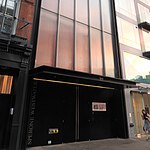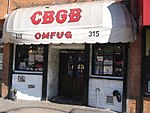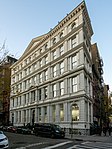Houston Street station (IRT Third Avenue Line)
1878 establishments in New York (state)1955 disestablishments in New York (state)Defunct New York City Subway stations located abovegroundFormer elevated and subway stations in ManhattanIRT Third Avenue Line stations ... and 3 more
Manhattan railway station stubsRailway stations closed in 1955Railway stations in the United States opened in 1878
Houston Street was a station on the demolished IRT Third Avenue Line in Manhattan, New York City on the Bowery. It opened on September 16, 1878, and had three tracks and two island platforms, which served all three tracks on one level. This station closed on May 12, 1955, with the ending of all service on the Third Avenue El south of 149th Street.
Excerpt from the Wikipedia article Houston Street station (IRT Third Avenue Line) (License: CC BY-SA 3.0, Authors).Houston Street station (IRT Third Avenue Line)
East Houston Street, New York Manhattan
Geographical coordinates (GPS) Address Nearby Places Show on map
Geographical coordinates (GPS)
| Latitude | Longitude |
|---|---|
| N 40.724166666667 ° | E -73.992611111111 ° |
Address
East Houston Street & Bowery
East Houston Street
10002 New York, Manhattan
New York, United States
Open on Google Maps






